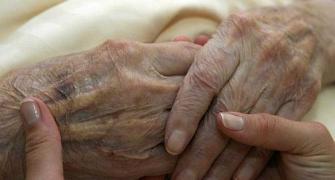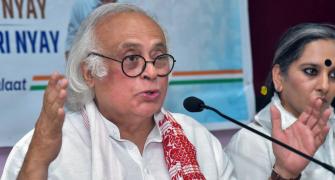According to CRISIL, eight per cent of the private sector employees are covered under pension benefits currently.
 CRISIL Research on Tuesday warned the government over increase in its fiscal burden due to higher pension payments, as India gets comparatively older in the next few decades.
CRISIL Research on Tuesday warned the government over increase in its fiscal burden due to higher pension payments, as India gets comparatively older in the next few decades.
India’s old-age population will go up to 180 million (from 100 million at present) by 2050 and if the government doesn’t create safeguards, it will have to bear 3.4-4.1 per cent of the Gross Domestic Product by 2030, said a report titled ‘When India ages, whither pension for all?’, released by CRISIL Research.
The old age population will further touch 300 million by 2050.
These population numbers were United Nations’ estimates.
The report mentioned that the government spends 2.2 per cent of the GDP on pension bill.
“The demographic profile of the country is the biggest positive driver of economic growth but what gets lost in all the discussion is that India is rapidly ageing,” said Roopa Kudva, managing director and CEO, CRISIL.
Kudva added that in such a case, a multi-fold rise in the pension coverage of private sector is essential.
According to CRISIL, eight per cent of the private sector employees are covered under pension benefits currently.
It said that the private sector coverage will have to increase from eight per cent to 70 per cent by 2030 and for this, the retirement fund corpus will have to grow at 21 per cent annually.
If this happens, the government will have to provide “pension to only 30 per cent of the old who are needy, in addition to retired government employees.
"As a result, the government’s pension Bill will rise by 120 basis points, to 3.4 per cent of GDP by 2030 from 2.2 per cent currently,” the report added.
If the private sector is unable to expand its coverage, the fiscal burden will rise to 4.1 per cent of GDP by 2030.
The report lauded the government’s move of a defined contribution formula under the National Pension System for government employees since 2004.
“This will trim its government employee pension burden to 0.7 per cent of GDP by 2050,” said the report.
It suggested that the government should takes steps to increasing formalisation of jobs.
“As many as 93 per cent of the workers is in the informal sector.
"Hence, a large number of people need to be a part of the formal sector to get the Employees’ Provident Fund coverage,” said D K Joshi, chief economist at CRISIL.
Another suggestion was to rein in low inflation to make room for savings.
“Bank deposits account for nearly 55 per cent of household financial savings in India.
"The share of provident and pension funds is around 15 per cent today.
"The past few years have seen a sharp decline in household financial savings rates, mainly due to persistently high inflation.” the report noted.
Another way was to provide tax incentives for the investments in retirement products.
For instance, it mooted National Pension Scheme be moved from EET (exempt-exempt-tax) to EEE (exempt-exempt-exempt) structure.
Under EET, funds get tax benefits at the time of contribution and accretion of the funds, but not when the funds are withdrawn.
In EEE, funds are completely exempt from tax in all the three stages.










